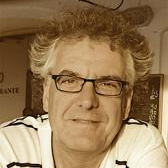Dear friends, colleagues, and followers,
last week the XVIII INQUA Congress took place in Berne (Switzerland). The session “Paleoseismology, megacities and critical social infrastructures” that was held on Wednesday 27 July 2011 (8.30 – 12.30), and, later the Business Meeting of the INQUA TERPRO Focus Area on Paleoseismicity and Active Tectonics took place. We had a very impressive session with important contributions of our Japanese colleagues, suffering not only earthquake and tsunami damage, but also from critical facilities.
Besides our nice presentations and discussions, it should be announced here that Prof. Alessandro Maria Michetti (Como, Italy) was elected INQUA TERPRO president. Congratulations from paleoseismicity.org. And thank you, Ale, for keeping us running.
 On the other hand, this means his position as chair and president of the INQUA TERPRO Focus Area on Paleoseismicity and Active Tectonics was vacant, but only for a short time. We have chosen Prof. Pablo Silva Barroso (Avila/Salamanca, Spain) as the follower of Ale as our president. Thank you, Pablo and congratulations from paleoseismicity.org. The very strong Spanish group has the ability to bring us forward. Luca Guerrieri (Rome, Italy) will continue as secretary of our Focus group. Grazie, Luca.
On the other hand, this means his position as chair and president of the INQUA TERPRO Focus Area on Paleoseismicity and Active Tectonics was vacant, but only for a short time. We have chosen Prof. Pablo Silva Barroso (Avila/Salamanca, Spain) as the follower of Ale as our president. Thank you, Pablo and congratulations from paleoseismicity.org. The very strong Spanish group has the ability to bring us forward. Luca Guerrieri (Rome, Italy) will continue as secretary of our Focus group. Grazie, Luca.
During this meeting, the INQUA TERPRO Focus Area on Paleoseismicity and Active Tectonics was pleased to release a first public version of the EEE Catalogue and a draft volume of the ESI and EEE volume. The public version of the EEE Catalogue, a global catalogue of environmental effects induced by modern, historical and paleoearthquakes, is available at http://www.eeecatalog.sinanet.apat.it/terremoti/index.php.
This public version has been developed on a Google Earth platform and aims at providing basic information at earthquake, locality and site level, including the rupture zones (when available) and the local description of environmental effects, integrated by some imagery (photographs, stratigraphic logs, etc.). Currently you will find EEE information from about 60 events that are completed or in progress. The Focus group acknowledges all compilers that have collaborated to the implementation of the EEE Catalogue in the frame of the INQUA TERPRO network. Of course we are planning to continue the implementation even in the next inter-congress period.
Furhermore, the draft volume “Earthquake Environmental Effects, intensity and seismic hazard assessment: the ESI intensity scale and the EEE Catalogue” is now available at http://www.isprambiente.gov.it/site/en-GB/Projects/INQUA_Scale/Documents_/.
With the aim to promote the use of the ESI intensity scale, this volume will provide the translation of the ESI scale in seven languages (English, Italian, Spanish, German, Japanese, Russian, Greek) and two other versions (French and Dutch) are in progress (and probably Hungarian and Lithuanian (lietuvių kalba) will soon be available). All the colleagues that have translated the ESI scale are gratefully acknowledged for their support. The volume is completed by an introductive chapter that highlights the primary role of EEEs in recently occurred earthquakes, a chapter illustrating the EEE Catalogue and a list of references published in the last years in the frame of the abovementioned topics. For our German friends: please see Wikipedia: http://de.wikipedia.org/wiki/ESI-Skala.
Please note that this is only a draft version. The final version will be published and printed as ISPRA volume (with ISBN code) in the nexth months.
So, with my very best regards, and luckily back from expensive and cold but nice Berne
Klaus



No Comments
No comments yet.